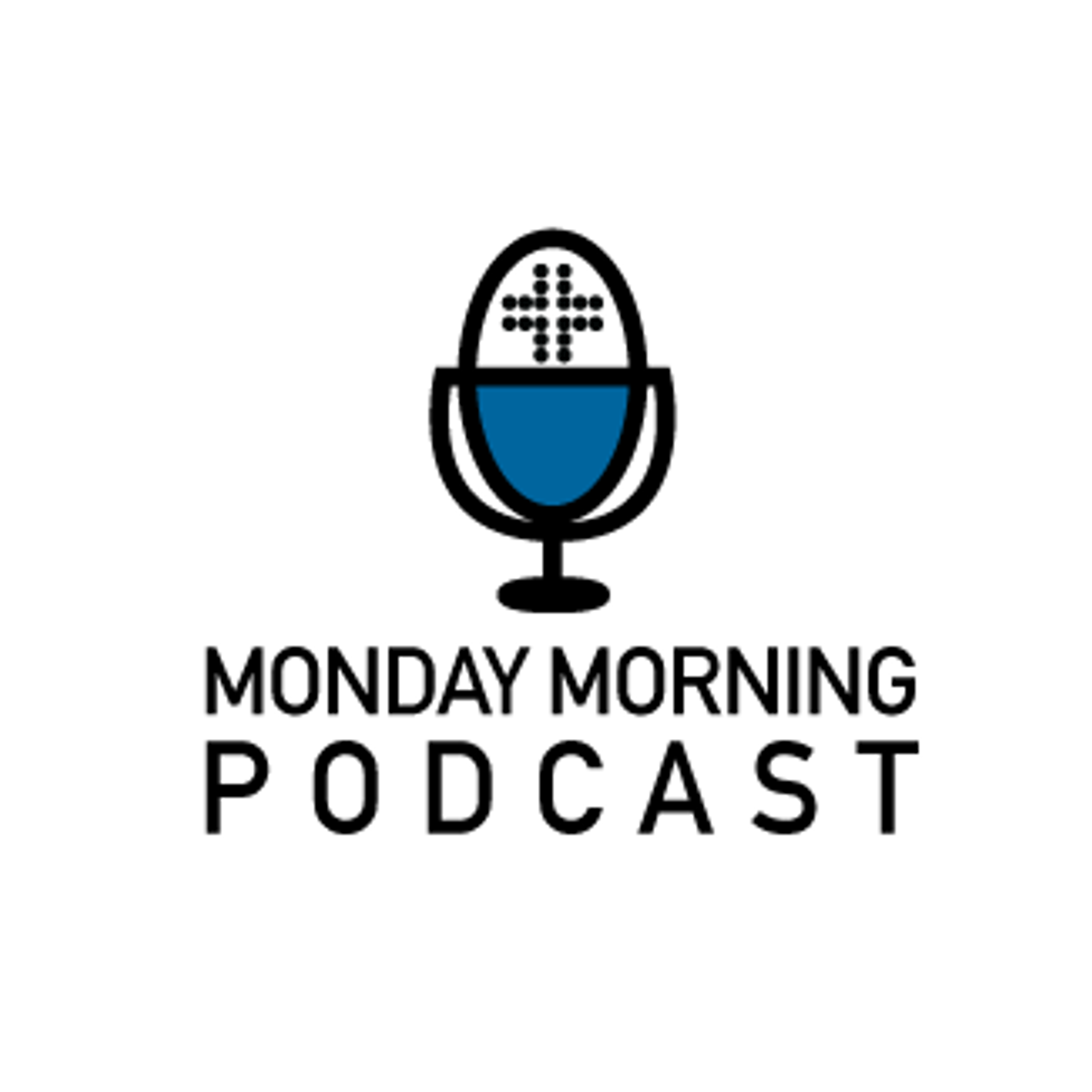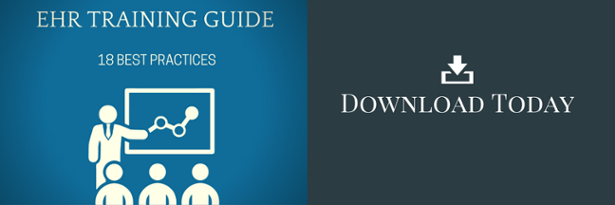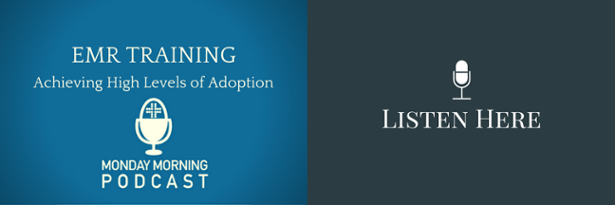(Healthcare IT Podcast) EHR Training: Developing Your Curriculum, Using Your LMS, and Organizing Your CTs ft. Stephen Tokarz


For the 10th episode of our Monday Morning Healthcare IT Podcast Series, Tom sits down with Stephen Tokarz, HCI's Senior Vice President of Operational Delivery. Tom and Stephen discuss what goes in to developing a curriculum, online training, using your LMS, and organizing your credentialed training program during an EHR training project.
In case you missed it, make sure to check out our episode from last week, where John Kocon went over why PMO can be a great benefit to healthcare organizations.

Transcript
Tom: Hello and welcome to the tenth episode of our Monday Morning Podcast Series. My name is Tom Letro of the HCI Group, and today I will be joined by Stephen Tokarz, our Senior Vice President of Operational Delivery here at the HCI Group. Stephen has experience as both an Epic Systems employee and Training Director, in addition to his former title as our Senior Vice President of Training and Activation. With over a decade working in training for Healthcare IT initiatives, Stephen knows what does and doesn’t work during a training project, and today we will be discussing how to develop your curriculum, as well as what goes into online training, using your LMS, and organizing your credentialed training program. Thank you for joining us today, Stephen.
Stephen: Thanks Thomas, happy to be here.
Developing a Training Curriculum
Tom: Now Stephen, you’ve led numerous training programs, what goes into the process of developing a successful training curriculum?
Stephen: So, when you are creating a training curriculum, you really want to put yourself in the shoes of the end user, and think about “what are some of the reasons that we are going to this electronic medical record”, and I really like to divide it into four different areas, and call it the “four p’s”. So the first is the patient experience, so clinicians and other operations folks go into this field to do what they can to improve the patient experience, so being able to point out along the way in your scenarios what is going to improve the patient experience with this new system is very important.
The next piece is precision, so an electronic medical record relies on reporting and aggregating data and other things, so clinicians are able to deliver much more precise care.
And the next is productivity, so pointing out ways that the electronic medical record might help them to be more productive with their day is an essential way to tout the benefits for them.
And then the final one is price, so in the climate we have with healthcare, I think that all clinicians and operations folks are sensitive to the price of care, and the importance of keeping that controlled as much as possible, so even pointing out little things like not having to print off this piece of paper like before, I think that is another area where you are able to tout the benefits. And when creating curriculum, it is important to use realistic scenarios. Your EHR vendor will likely prepare you with more generic tools, but really take the time to meet with key stakeholders, clinicians, gather case studies and put together realistic scenarios so that people can be captivated and interested in the learning in class. And then once you have those created it is important to get signoff from the right stakeholders, so make sure the analysts are signing off, make sure that the operations folks are, it really is a measure twice, cut once type scenario with curriculum.
Importance of Online Libraries and Training
Tom: And speaking of your curriculum, why is an online library curriculum so important?
Stephen: Sure, so, an online library curriculum is essential because, when people attend class, they are probably only going to retain about 20% of what they learn. So it is very important to provide a place where they can go back and revisit the material. If you think back to when you were in grade school, high school, or in college, you probably gleaned only so much from your actual classroom time, and then got the most out of those studying experiences. So creating a repository online on the intranet usually, because it is often important to make sure the material for Epic or Cerner is kept somewhere securely, create something that has a nice user interface and is very intuitive. Some organizations even use a Wikipedia type engine to do this. It is important so folks can go back and revisit this material. Some software vendors like Epic have even gone as far as to make it possible to embed tip sheets and other learning materials and dashboards within the system so it is available at a point of need. So thinking through this strategy at the beginning when you are, I guess, beginning your curriculum development cycle, is very important.
Tom: Now, for this online library, what are some of the most helpful tools and platforms that are currently out there?
Stephen: It really depends on what your organization has done in the past. If there is a platform that you used, such as Wikipedia or a certain Sharepoint type of site that folks are accustomed to utilizing, it is always nice to do that, because the familiarity can be helpful as people are digesting new material. But you know I’ve really seen leveraging, of learning home dashboards within Epic, a really clean intranet set, and then some of the new features of Sharepoint, where you can search or query for certain things. Those have been probably the most common that we're seeing right now.
There is other knowledge management systems and repositories and products that are out there, those are gaining more popularity, but additionally we are seeing a lot of Sharepoint and classic intranet sites. But it is definitely worth appointing a graphic designer, if you have someone in house that you can utilize for that, to make it look clean and flow nicely. Because like anything else, if you go on the internet to look up a place to order pizza and it is an old antiquated site, it is just a little less appealing and you are going to less capture less users. And the nice thing, too, with Sharepoint and other platforms, is you get some analytics behind it, and see who is accessing what pages, and use that data to kind of drive how you craft or shape your page in the future.
Areas That Can Change Pre Go-Live
Tom: So, from your analysis around this time, I remember you telling me that tip sheets pre go-live can start to evolve. How do you decide what areas need additional focus?
Stephen: Sure, so you are going to capture as much as you can in your curricula for during class, but it’s going to be important, there’s going to be certain workflows that your organization is going to need to really drive home with end users, it might be something that is a departure from current practice, or it just might be something that you noticed in the classroom that people are struggling with. So based on some of the initial analysis, you should be able to know, even a couple months out before go-live, which workflows are going to need some additional emphasis, so we recommend creating some pre go-live tip sheets, and having those available even ahead of go-live.
Then, during your training classes, and when your super users are participating in the readiness activities, they can show folks, the end users, where these are posted online. So, even getting a jump start on tip sheets, and creating those pre go-live tip sheets is something you want to do. And at go-live, obviously, the system is constantly being refined or tweaked, and you notice there are certain areas that you might need to get announcements out for, so having those tip sheets and that process in place is going to be really essential. Usually your training team is probably best first in putting together a pretty intuitive tip sheet, but you need to make sure that you have sign off from operations and the analysts, so that whatever goes out to the general public has been signed off on and is reflecting accurate information. So I would say, number one, that workflow, and number two, having a nice place to post those, are very important.
Leveraging Your LMS
Tom: And how should organizations leverage their Learning Management System during EHR Training?
Stephen: Yeah, so most organizations do have a Learning Management System that they leverage, or yearly training, HIPAA training and other compliance means, but most, or several organizations have not leveraged their LMS to the extent that they are going to need to for EHR training, it really tends to push these learning management systems to the limit. And at this point I would say it is always good for organizations to reach out to other organizations that have their same LMS and have leveraged it for EHR training, just due to the sheer volume. If your organization has 5,000 nurses, and each needs to come to three classes, that’s 15,000 different input points into the LMS, and then it is going to be very important, the reporting capability of the LMS, because leadership is going to want to know where you stand with getting people enrolled in the class, and how completion reporting is looking, and also if there is a way to survey the students, and see how did they like the training facility, the curriculum, how was the instructor, because in the spirit of continuous improvement, you want to have a way to aggregate all that data. So looking for an LMS that is able to do all of those is essential.
Tom: Right, so who should organizations focus on building these relationships with, and why are they necessary?
Stephen: Yeah, I think that is an important piece, a lot of times it is beneficial if someone within your training leadership is someone who has been at the organization for a number of years, and gotten to know key stakeholders and operations, maybe even come out of operations, because when you go into the training cycle, it is going to be important to leverage those every step of the way. So we recommend putting together a training advisory group, several months before you even would start super user training, and this is going to be a key group that you are going to socialize your training strategy and plan with, and then also get ideas from. Because there has probably been, in the past, other large-scale training endeavors that have happened, and it going to be important to learn from those, and then most importantly, too, like any other large scale project, or interaction, there is going to be times, trying times on the project, and having those good relationships, where you’re able to work with people to come up with solutions together, that is going to be very, very important. So all along the way, everyone gets busy, it is important to remember that people are people, and it is important to take the time to learn to nurture those relationships.
Complimentary Learning Events
Tom: Ok, and so far we've about developing your curriculum, online training, and using your LMS. How can you use complimentary learning events to enhance training?
Stephen: So traditionally we think about training as being that butts-in-seats right before go-live, but there really are a number of other opportunities where you can educate staff or get them familiar with what’s going to happen with the change.
So we really like events like cyber cafes, where even before training, people are able to get hands-on with the system and it really demystifies it. We like to think of multi-disciplinary learning siutations, so getting the doctors and nurses and MA’s in a room together, so they can understand the repercussions of needing to complete their documentation correctly, so really understanding those upstream and downstream implications. Any type of personalization activities you can do are important, and then do what you can to educate clinicians and other operations folks on doing their own demos, we call them demos for adoption. If you are able to educate a physician and then he can do a demo to his peers at a meeting or grand rounds, there is really nothing more powerful than that. When they are seeing and hearing the benefits of the EHR from a peer, that is a real win.
Planning/Organizing Credentialed Training Programs
Tom: Right, and last question here Stephen, how about your credentialed training program? How do you plan for it or how do you organize it?
Stephen: Yeah, so organizations go many different routes in setting up a CT program, where they are going to get a pool of people. Oftentimes they’ll grab some people from the units, which is great because they have that intrinsic knowledge of the organization and their specialty, and they’ll have instant credibility because they’ll be speaking to their peers. Sometimes people go out and bring in experienced trainers, which is great, but there does need to be a period of time in which we take time to familiarize with the organizations workflows.
Some organizations go out and get non-experienced people that maybe could be EMTs, or other former teachers, and even other organizations go out and get recent college grads, so there are a lot of pools or pockets of talent that you can rely on for credentialed training, but you just need to make sure that that time when they come on site is very structured. It can take as little as two weeks to get a credentialed trainer up to speed, or even as many as 6, 7, or 8 weeks if you are bringing in someone who is new to the electronic medical record system. So it is just going to be very important to have structured daily activities and feedback mechanisms throughout the program, and that is something that we have really worked to do is build up a library of standard work, so no matter what your mix looks like, those CTs can get up to speed as quickly as possible, and be ready to give an excellent learning experience to your end users
Tom: And an excellent experience for your end users would most certainly lead to a smoother and more seamless training project, but thank you Stephen, that is all the time we have here today.
For more information on what goes into an EMR Training project, make sure to follow us on social media, and to subscribe to our blog and our podcast. Also, make sure to comment below with any questions, concerns, or things that we may have missed, so that we can keep the conversation going.
For Stephen Tokarz, this has been Tom Letro of the HCI Group. The HCI Group, offering a smarter approach to Healthcare IT.



